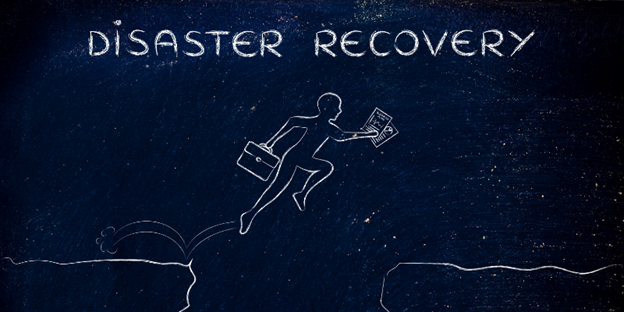
Having a business continuity plan is a pillar for any organization. It’s the blueprint of what to do when disruptions to business occur. In the modern world, that can include many things, from natural disasters to cyber-attacks to pandemics. One pivotal part of business continuity is a mailing disaster recovery plan.
However, just because you have a business continuity plan doesn’t mean you’ve accounted for every type of recovery. You’re covering the fundamentals of operating your business—technology, infrastructure, communications, and physical operations. But what about what’s on the peripheral? Do you have a disaster recovery plan for mission critical print and mail?
Not Accounting for Mission-Critical Print and Mail Communications Creates Risk
A mailing disaster recovery plan documents the structured approach to resuming normal operations. Its goal is to minimize the impact of the disaster and any risk associated with it. That risk can take shape in many ways, so what’s the potential effect of delays in transactional mail?
Not making it part of a disaster plan can result in dire long-lasting consequences, including:
- Non-compliance with mandates for the proper handling of personal data relating to privacy laws like HIPAA, SOC I & II, PSI-DSS, and FISMA.
- Failure to meet deadlines in the delivery of certain responses in healthcare and financial environments.
- Cash flow issues if statements don’t arrive on time, therefore delaying payments.
These risks are true for those with in-plants that run their own print and mail as well as those that outsource. The former means it’s on you to have a backup plan, which means you either need a redundant facility or have a provider that only picks up work for you in the case of an emergency.
If you outsource all these functions, you’re still assuming risk if your partner doesn’t have a disaster recovery plan that minimizes downtime. Being offline for only a small amount of time can lead to these consequences.
Integrating Transactional Printing Requirements Into Your Mailing Disaster Recovery Plan
 How you incorporate transactional mail into your disaster recovery plan depends on the circumstances addressed above. Let’s break down those two scenarios
How you incorporate transactional mail into your disaster recovery plan depends on the circumstances addressed above. Let’s break down those two scenarios
In-Plants
Your plan should address how you’ll recover and continue to run. It’s not just about having equipment in another facility. There must also be contingency plans for the actual data needed to print the files.
So, you have multiple areas involved—facility management, compliance, and IT. All three will need to collaborate on the “what ifs,” and building such a plan will require capital investment.
Your alternative is to contract with a provider and keep them on retainer as an insurance policy. The problem with this is that it adds dollars to an already tight budget. Plus, you have to make sure they have plans for keeping business running.
Further, you’ll need checks and balances in place to make sure they have the correct templates for your letters or statements and that all their operations meet compliance requirements.
Outsourcing
If you outsource all your transactional mail, it’s all about working with experts in the space that are literally prepared for everything. They need to have a multi-layered approach to protect, sustain, and recover, which means a redundant location. With this safeguard of a mailing disaster recovery plan, there shouldn’t be delays that could cost you fines or slow revenue.
You also want to know that they have the highest standards and certifications around data and physical security. So that even in a disaster situation, there’s no further exposure.
A Better Way to Recovery and Sustain With a Mailing Disaster Recovery Plan
Business continuity is complex and covers every aspect of your business. However, not all disaster recovery planning has to be on your plate. Partner with a trusted transactional mail leader like PCI Group. Our business continuity structure is rigorous and includes two redundant locations.
Our plan, called the ACTIV dR, is unlike other vendors’ “cold-site” approach that only kicks into action during catastrophic events. There’s no annual or declaration fee. Instead, we produce a portion of your print and mail every month so that processes are already in place. Get more information about this program today.

